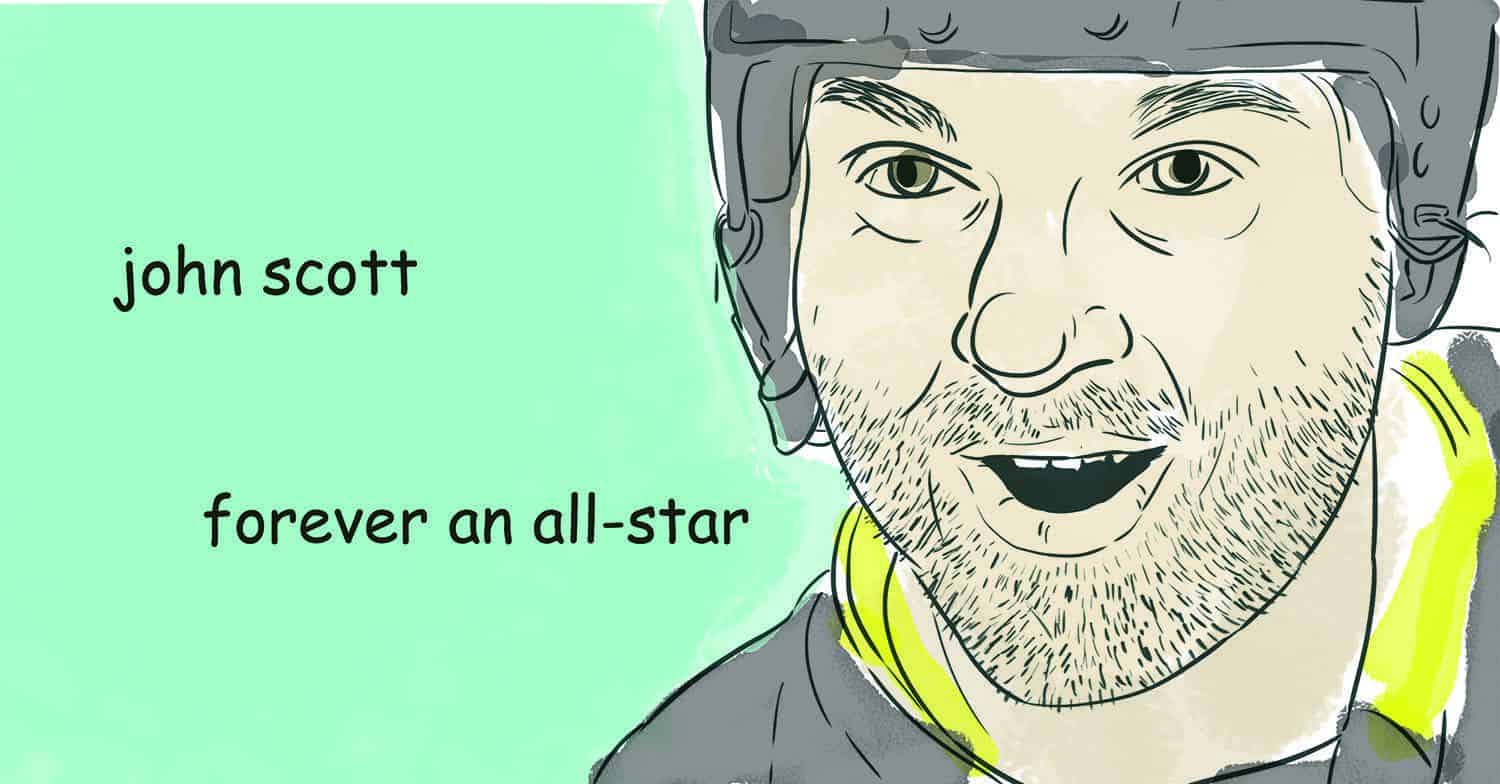[dropcap]I[/dropcap]n the Arizona Coyotes’ most recent game against the Winnipeg Jets, Coyotes left-winger John Scott averaged roughly five minutes and 11 seconds on the ice. He did not receive a single goal or assist, let alone a single shot on net, and would have been entirely forgettable had it not been for a two-minute penalty he received during the second period of play. Now, after 11 games and one recorded point this season, Scott is headed to the NHL’s All-Star game with absolutely nothing to show for it.
How did such a low-caliber athlete get into the all-star game, you might ask?
It’s a long story.
His rise to fame began a few months back, when fans of the Arizona Coyotes were asked to vote on their preferred players for the NHL’s annual talent show. Arizona — a state that’s 90 per cent desert and 10 per cent cacti — isn’t exactly known for its love of the puck, so it’s no surprise that the fans elected one of the worst players on the team to perform.
After being voted in by fans, Scott was subsequently traded to the Montreal Canadiens who sent him down to their farm team, the St. John’s IceCaps upon arrival. It seemed, briefly, as though all hope was lost. Until an Internet movement — bound together by a mutual appreciation for this deficient competitor — resurrected Scott from the bowels of the minor leagues.
The group behind the movement demanded that the national league, as they put it, “#FreeJohnScott.” The fans succeeded, and Scott will now captain the Pacific All-Stars in their match against the Central All-Stars. In a nutshell, that’s how John Scott became a so-called All-Star (Captain All-Star, at that), but more importantly, it’s how John Scott became #JohnScott.
Scott is one of many mediocre athletes to reach surprising heights of popularity entirely by accident. But skill level doesn’t necessarily equate popularity. Gone are the days when fans prescribed worth based solely on athletic expertise. In the age of Internet memes, professional athletes can be any level of athletic proficiency — as inspiring or uninspiring as they please — and still develop a cult following that could blow LeBron James’ fan-base out of the water. While recruiters look for specific skill-sets in professional athletes, online popularity strives on quirks, physical appeal, or one eyebrow where there should be two. The goal is not to find an inspirational figure for us to cling to; rather, it’s to find amusement that will appease our momentary attention spans.
It’s hard to say where all this started, but then again, it’s hard to say where anything ‘started’ on the Internet. At some point or another, somebody found an athlete’s face, actions, or performance laughable, packaged it into a meme, and catapulted their creation into cyberspace.
NFL quarterback Tim Tebow was one of the first athletes to fall prey to the Internet’s memedom, when the act of ‘Tebowing’ became a popular practice amongst football and non-football fans alike. His stats weren’t deplorable, but they were nothing to write home about either. People liked him because he’d drop to one knee when overcome.
The other popular athlete who found meme-fueled fame, is Anthony Davis, whose name NBA fans wouldn’t recognize had it not been for his unibrow. The Internet quickly picked up on his captivating facial hair, meme’d it, and now — as a non-NBA fan — you’re more likely to recognize Davis than you are to recognize Steph Curry.
Needless to say, the popular yet mediocre athlete has long predated the Internet. The ‘entertainers’ — like Tie Domi, Dennis Rodman, or Dock Ellis — have been around as long as fans have taken pleasure from the oddities of sport. But now, said entertainer is selected rather randomly, and often without the athlete’s knowledge. Davis didn’t set out to have his face become a popular Internet meme, and Scott certainly didn’t plan to play in the all-star game. But in the world of sporadic and momentary online trends, anything is possible.


